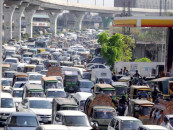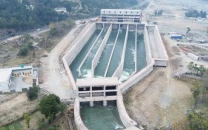An Israel-Hezbollah war — outcomes and implications
Hezbollah can now take a sharp aim at Israel’s economy; disrupt maritime trading; scramble air communications

An all-out war between Hezbollah and Israel would unleash new threat theatres and vectors for Israel. The IDF will have to deal with multiple new war-fronts: Hezbollah’s ballistic and artillery threat from the north, Hamas (still) from the south and Houthi firepower which imperils Israel’s Eastern flank via the Red Sea.
The stakes get higher. A low-intensity skirmish escalates into a full-blown war with a nuclear Israel having a trigger-happy fascist PM at the helm is deeply disconcerting. If the IDF attacks via the Golan Heights (which seems increasingly imminent), Hezbollah will deploy a multi-tiered assault against Northern Israel. Iran may get roped in. The US presently erecting an intelligence/military outpost in Gaza (cloaked as a floating aid pier) will fully assist the IDF and Israel’s Elite Special Ops Units like Sayeret Matkal Unit 154 and Shayetet 13. In retaliation, Hezbollah would launch ATGM’s such as the Kornet, near the contested Shebaa Farms, between the Blue Line and Litani River (very strategic to Lebanon’s agriculture, irrigation, industrial and water base).
Hezbollah has already done a lot of strategic damage to Israel, from striking the Meron air control base to targeting their other military installations in Northern Israel. Hezbollah’s (pre-emptive) missiles are likely to attack Israeli towns like Kiryat Shmona (an electrical, industrial and tourism hub in the Hula Valley) Nabatieh and Ghajar (illegally occupied by Israel). Hezbollah is likely to ignite Katyusha rockets (as it commonly does in the Golan) and may deploy SRBMs like the Fateh-110 which can strike right till Northern Negev (a cultural epicenter) and MRBMs (Raad and Zilzal). Israel’s swift retort would most likely be striking Bazourieh, the Aadous plain (home to Hezbollah warehouses), Buday village (in Baalbek) and the Bekaa Valley — all Hezbollah strongholds.
The IDF would relentlessly target Lebanon’s southern and eastern flanks and also take aim at Aleppo and Eastern Syria (targeting Hezbollah’s and IRGC’s assets and weapon depots).
The units that would become most active will be Hezbollah’s Special Ops Redwan Regiment 125 which will bitterly be pitted against Israel’s GOC 5 Corps as well as the 869th Shahaf Field Intelligence Battalion (which protects Israel from Lebanon) and the 595th Ait (meaning Eagle) Field Intelligence Battalion which would be most active in combat.
Strategic and tactical alliances will be formed (even if temporarily as in any war). Hezbollah will draw closer to IRGC regional entities and assets. Hezbollah would join hands with al-Jamah al-Islamiyah and the elite Quwwat al-Fajr (Dawn Forces) in Lebanon who are Sunni forces close to Turkiye and Qatar — bridging a Sunni-Shia rivalry (for now). Hezbollah would intensify rapport with Hamas’s Lebanon wing known as the Tala’i Tawfan al-Aqsa (Vanguards of the Al-Aqsa Flood) and bolster arms deals with IRGC factions in Syria and Iraq, smuggled through the Bekaa Valley where munitions would be stored to strike Israel as required.
Just like the Gaza Marine, where Tel Aviv has confiscated Palestinian offshore natural gas reserves, similarly, for a while now, Israel has been eyeing up Lebanon’s Block 9, its crude oil and offshore oil and gas exploration prospects. Lebanon’s Levant Basin has 25 trillion cubic feet (Tcf) of natural gas reserves.
Even though Hezbollah’s APCs are now equipped with an APS Trophy, which means they can, at times, get past the Iron Dome (Israel’s Counter-Rocket, Artillery and Mortar shield), also launching multiple rockets at once overwhelms the Iron Dome lowering its interception potential.
Despite all this, it is Israel’s air power that’ll give them an upper edge, as Hezbollah’s AAMs protection radius are limited in area, size and scope. For instance, Israel’s fighter jets struck two Hezbollah military command centres in Baalbek, an army compound in Khiam, and infrastructure in Bint Jbeil and Nabi Chit.
An all-out war is unwise for Israel as Hezbollah is much more resilient, potent, trained, numerous and weaponised as compared to Hamas. Hezbollah can inflict significant damage on Israel. It can strike lethal industrial chemicals in the Ramat Hovav Zone that would trigger toxic chemical clouds across Northern Israel. Hezbollah also accumulated an arsenal of shore-to-sea missiles like the 300km range (Russian) Yakhont missile capable of reaching all of Israel’s coastline which may be utilised to strike Israel’s recently erected (controversial) gas-extraction rigs at the Leviathan gas field in the Mediterranean.
Hezbollah can imperil commercial shipping to and from Israel’s ports. Witness how the Red Sea and Bal al-Mandab Strait are already jeopardized: a Hezbollah-Houthi alliance can disrupt Israel’s prime shipping lifeline to Eilat Port, perched at the nerve-centre of Jordan’s sole coastal access point at Aqaba, providing Tel Aviv an Eastward sea-route coursing via the Suez. Hezbollah can similarly disrupt Israel’s Mediterranean ports in Haifa (as Israel’s west borders the Mediterranean, and eastern borders are sealed by its Arab neighbours, Haifa is Israel’s pivotal gateway to the rest of the world) and Ashdod port (a financial and maritime corridor to Israel, and very close to main commercial arteries and highways).
Hezbollah can now take a sharp aim at Israel’s economy; disrupt maritime trading; scramble air communications (Hezbollah has already done that by targeting Meron’s air-control base) with the world; and short-circuit a huge chunk of its power production (for instance, Israel Electric Company’s power generation plants) harming factories and other key economic activities via rocket artillery and missiles in lieu of aircraft.
With more than 32,000 (mostly children) already dead in Gaza, how many more lives must perish for humanity to prevail? A timely and resilient diplomatic intervention is necessary by the global community, along with a permanent ceasefire in Gaza, with a path to Palestinian statehood, once and for all, before the entire Middle East goes up in scorched flames.
Published in The Express Tribune, April 2nd, 2024.
Like Opinion & Editorial on Facebook, follow @ETOpEd on Twitter to receive all updates on all our daily pieces.













COMMENTS
Comments are moderated and generally will be posted if they are on-topic and not abusive.
For more information, please see our Comments FAQ